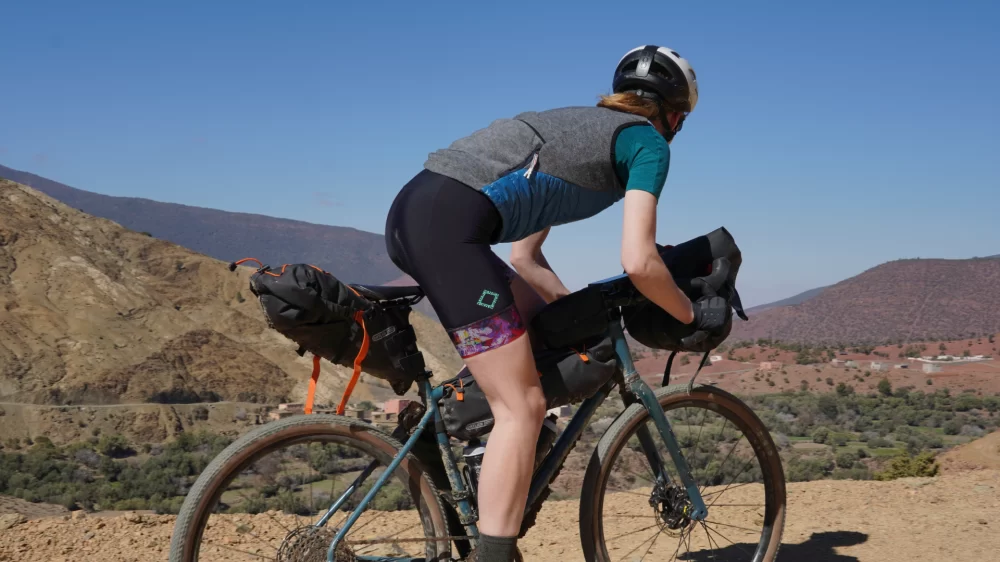
- choosing-the-right-gear-for-multi-day-bike-trips
- organizing-your-load-strategically-for-bike-travel
- packing-smart-essential-bikepacking-items
- weather-and-terrain-considerations-when-packing
- real-life-experience-and-what-i-learned-the-hard-way
- where-to-find-help-and-products-for-bike-trips
1. Choosing the Right Gear for Multi-Day Bike Trips
When preparing for a multi-day bike trip, the first and most crucial step is selecting the right gear. Not all cycling gear is built for long distances. You need durable equipment that balances weight, utility, and comfort. A good touring or gravel bike is foundational—think strong frames, reliable disc brakes, and mounting options for racks and bags.
Investing in waterproof panniers or bikepacking bags is also essential. These bags are designed to distribute weight evenly across your bike without throwing off your balance. Frame bags for heavy essentials, handlebar rolls for soft items like sleeping bags, and saddle packs for clothes all help maximize space while maintaining ride stability.

Conte's Bike Shop
3449 Wilson Blvd, Arlington, VA 22201, USA
2. Organizing Your Load Strategically for Bike Travel
Once you’ve chosen your gear, the next step is how to pack it. Proper load organization can make or break your trip. Prioritize stability: heavier items should be stored low and close to the bike’s center to keep balance, especially on rough terrain.
Divide your belongings into three categories: must-access (snacks, tools, maps), semi-daily (clothes, toiletries), and rarely used (repair kits, backup layers). Place high-access items in your top tube bag or front pouch for easy reach without stopping.
One popular strategy is the “three-zone system”: front (light bulk like a tent), middle (dense weight like food and water), and rear (clothes and sleeping items). This method not only keeps your bike steady but helps you develop a natural rhythm to unpacking and repacking.

Bicycle Barn LLC
839 Reading Rd, East Earl, PA 17519, USA
3. Packing Smart: Essential Bikepacking Items
Every rider has their preferences, but some essentials are non-negotiable. You’ll need a reliable multi-tool, tire levers, spare tubes, a pump, and a patch kit. Don’t overlook a first-aid kit tailored for minor injuries that might occur on the trail.
For clothing, think layers: a moisture-wicking base layer, a mid-layer for insulation, and a windproof or waterproof outer layer. Always bring more socks than you think you’ll need—wet feet are trip killers. Quick-drying materials are a must.
Cooking gear should be minimalist. A lightweight stove, fuel, pot, and spork are often enough. For food, consider calorie-dense and easy-to-prepare options like dehydrated meals, oatmeal packs, and nut butter sachets. Hydration is vital—carry purification tablets or a compact filter if you’ll be refilling from natural sources.
4. Weather and Terrain Considerations When Packing
Where you're riding has a major impact on how you pack for a multi-day bike trip. Will you be cycling through arid deserts, humid jungles, or cold alpine passes? Adjust your packing list accordingly.
In hot climates, you’ll need more water capacity and breathable fabrics. For cold environments, consider insulated gloves, thermal layers, and perhaps even bar mitts for your handlebars. Rainy or variable weather calls for waterproof layers and dry bags inside your panniers for double protection.
Also, think about terrain. On paved roads, panniers work great, but for rough trails or off-road routes, frame and seat bags are better suited. Tire choice matters too—gravel tires for dirt roads, slicks for asphalt.
5. Real-Life Experience and What I Learned the Hard Way
The first time I packed for a week-long solo trip through Oregon’s Cascade Range, I made nearly every mistake in the book. I overloaded my rear panniers, ignored weather reports, and brought way too much food. By day three, my knees were sore, my sleeping bag was wet, and I was rationing snacks.
But I learned. I started rotating my clothing choices daily, used compression sacks for bulk, and ditched half my load at a friend’s cabin halfway through. That journey taught me that less is more—but the “less” has to be smart.
A friend of mine, who once bikepacked across Patagonia, swears by modular packing cubes and insists on always carrying duct tape and zip ties. It’s small insights like these—earned through tough miles—that turn good trips into great ones.
6. Where to Find Help and Products for Bike Trips
Getting ready for a multi-day ride doesn’t mean you have to figure everything out on your own. There are communities, guides, and great cycling-focused platforms out there. If you’re not sure where to start or need reliable gear recommendations, you can always visit Healthy Cycling to explore top-rated products, expert-approved kits, and local service suggestions tailored for long-distance cyclists.
Whether you're looking for ultralight tents, compact cooking gear, or climate-appropriate clothing, the right support makes a big difference. Getting advice from seasoned cyclists or reading honest gear reviews can help you avoid rookie mistakes and build a setup that works for your unique journey.










